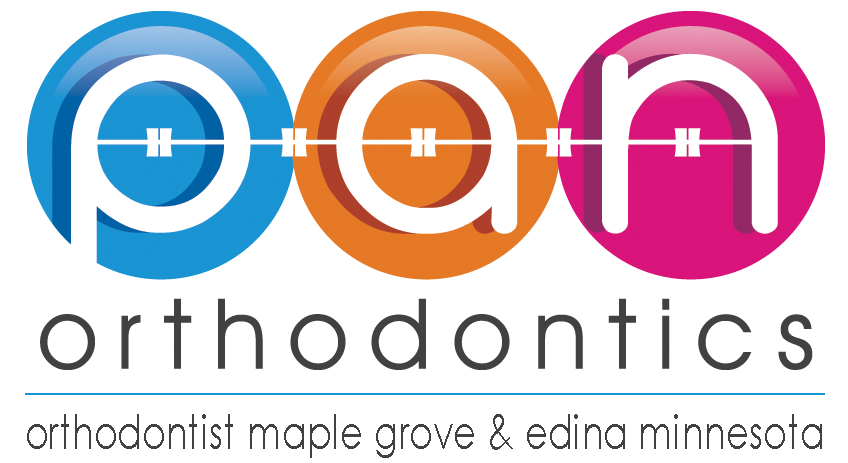Ortho Procedures - Serial Extraction
A serial extraction is the planned extraction of teeth in a strategic sequence in order to guide the erupting permanent teeth into a more ideal position.
History
Kjellgren of Sweden used the term "serial extraction" for the first time in 1929. The technique gained popularity in the United States in the 1940s by Hayes Nance under the term “planned and progressive extraction”. Nance is commonly known as the father of serial extraction in the United States. Hotz of Switzerland called the procedure the "supervision of teeth by extraction" in 1970.
Procedure
There is not a specific technique that needs to be followed while completing serial extractions. A careful diagnosis and ongoing evaluations during treatment is critical in order to achieve the desired results.
Based on the typical eruption pattern of the teeth, the treatment plan should involve extracting the deciduous canines around 8 to 9 years-old in order to create space for the proper alignment of incisors. This should be followed by the extraction of deciduous first molars a year later. This ensures the eruption of first premolars is accelerated and the extraction of the erupting first premolars creates space for the correct alignment of the permanent canines. In some cases, a modified technique is used where the first premolars are removed at the time of extraction of the deciduous first molar. This modification is often necessary in the mandibular arch when the canines erupt prior to the first premolars.
Selecting a Suitable Extraction Procedure
Extracting the primary canines only: this allows for a rapid self-improvement in the crowding of incisors and alignment intercepting the development of lingual crossbite of the lateral incisors.
Extracting the first primary molars only: this approach produces the earlier eruption of first premolars but reduces how rapid and the amount of incisor alignment. This is often used in order to retain the primary canines.
Extracting both primary canines and first molars: this is a compromise between the rapid improvement in incisor alignment and the desired early eruption of first premolars. In some cases, this procedure results in the simultaneous eruption of canines and first premolars. This may cause an increased distal translation of the permanent canines and possibly impact the first premolars.
Enucleation of first premolar buds: this procedure is suggested when the first premolar eruption is behind the canines and second premolars. This allows maximal distal translation of the erupting canines and is rarely indicated in the maxillary arch.
Indications
- In class 1 malocclusion cases which show harmony between the skeletal and muscular system
- Cases which present with arch length deficiency. This is indicated by the presence of one or more of the following:
- The absence of physiologic spacing
- Unilateral or bilateral premature loss of deciduous canines with a midline shift
- Mal-positioned or impacted lateral incisors which erupt palatally outside of the arch
- Markedly irregular or crowded maxillary and mandibular anteriors
- Localized gingival recession in the mandibular anterior region
- Ectopic eruption of teeth
- Mesial migration of buccal segment
- Abnormal eruption pattern and sequence
- Mandibular anterior flaring
- Ankylosis of one or more teeth
- Cases with insufficient growth to overcome the tooth material which can include basal bone discrepancy
- Patients with a straight profile and aesthetically pleasing appearance
Contraindications
- Class 2 and class 3 malocclusion with a skeletal abnormality
- Adequate dentition spacing
- Cases of anodontia or oligodontia
- Open bite and deep bite
- Midline diastema cases
- Class 1 malocclusion with minimal space deficiency
- Unerupted malformed teeth
- Extensive caries
- Mild disproportion between the arch length and tooth material which can be treated by proximal stripping
Advantages
- More physiologic treatment
- Avoiding psychological trauma from treatment at an early age
- Reduced duration of fixed orthodontic treatment
- Improved oral hygiene and reduced risk of caries
- Preservation of the periodontium and alveolar bone
- Less retention period is indicated
- Stable results
- Reduced iatrogenic damage
- Normal neuromuscular balance is achieved and maintained
Disadvantages
- No single approach can applied universally to all patients
- The treatment time is prolonged as the treatment is carried out in stages spread out over 2–3 years
- Risk of developing tongue thrust
- Extraction of the posterior teeth can lead to a deep bite
- Risk of arch length reduction
- Minor spaces may exist between canine and second premolar
- Axial inclination of the teeth may change at the end of serial extraction
Pan Orthodontics Philosophy
To treat our patients as our families and to treat others as how we want to be treated. From your first phone call to the moment your new smile is born, everything in our office is set up to ensure an excellent experience with us. We will always listen to you and improve with your suggestions.
Featuring The Latest Orthodontics Technology
Our Commitment to You
We will continue to keep up with the ever growing digital technologies to improve your orthodontic experience. We also commit to always help you find the most convenient time for your visit with us.




